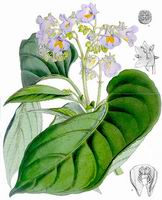
Bot. Mag. t. 5409 (1863)
Full name and orig. publication: Stauranthera Benth., Scroph. Ind. 57 (1835).
Etymology: From the Greek σταυρος, stauros = cross; and ανθηρα, anthēra = anther; in allusion to the anthers cohering in a cruciate manner.
Synonyms: Miquelia Blume (VI. 1838), nom. rejic, non Miquelia C.F.W.Meissn. (IX. 1838), nom. cons., Anomorhegmia C.F.W.Meissn. (1840), Quintilia Endl. (1841), Cyananthus Griff. (1854), non Wall (1836).
Infrafamilial position: Epithematoid Gesneriaceae.
Description: Perennial or annual monocarpic herbs. Stem fleshy-succulent, branched or not. Leaves opposite, strongly anisophyllous, the large leaves with short or long petiole, lamina strongly asymmetrical, elliptic to ovate, base strongly unequal-sided, apex acute-acuminate or blunt; sparsely hairy, lower side usually pubescent; the small leaves reduced to a tiny cordi- or reniform auricle. Inflorescence terminal, an alternicladic thyrse with pair- or single-flowered cymes or solitary flowers emerging from small bracts; bracteoles lacking; flowers pedicellate. Sepals in the lower part with conspicuous plications at the sinuses. Corolla 5-merous, either rotate-widely campanulate, ecalcarate, or zygomorphic and spurred at the base, blue or white, sometimes with a yellow blotch at the palate. Stamens 4, all anthers coherent and forming a cross-like figure. Nectary absent. Ovary globose or ovoid, style short, stigma large-capitate or bilamellate. Capsule globose, irregularly falling into pieces in the upper half. Seeds small, blackish-brown, reticulate.
Chromosome number: 2n = 36-40.
Species number: 5(-8).
Type species: Stauranthera grandiflora Benth.
Species names (incl. publication and synonyms): See Skog, L.E. & J.K. Boggan. 2005: World checklist of Gesneriaceae: http://persoon.si.edu/Gesneriaceae/Checklist.
Distribution: From NE India and S China throughout Malesia to New Guinea.
Ecology: On wet rocks and damp places in lowland rain forest.
Notes: The genus is remarkable in several respects: (a) strongly anisophyllous habit, (b) sympodial shoot architecture, principally similar to Loxonia, (c) loss of front-flowers in the cymes in S. caerulea Blume, (d) spurred (but nectar-less) flowers in S. grandiflora Benth. (deceptive pollen flowers?), (e) wide distribution (especially of S. caerulea, which except from New Guinea covers the whole distribution area of the genus). Its closest relative is Loxonia (Weber 1976, Mayer et al. 2003). A revision is under preparation by Weber (in prep.).
Selected references: Weber, Flora 166: 153-175 (1977), morph.; Wang et al. in Wu & Raven (eds.), Fl. China 18: 396 (1998) (Chinese spp.); Mayer, Möller, Perret, Weber, Amer. J. Bot. 90(2): 321-329 (2003), molec. syst.; Weber (in prep.), rev.
Bibliography: See Skog, L.E. & J.K. Boggan. 2005. Bibliography of the Gesneriaceae. 2nd edition: http://persoon.si.edu/Gesneriaceae/Bibliography.
Illustrations:
 |
Stauranthera grandiflora Benth., type species
Bot. Mag. t. 5409 (1863) |
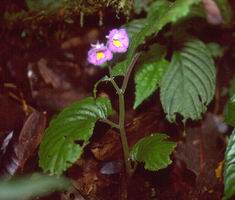 |
Stauranthera grandiflora Benth.
Sumatra, s. loc., phot. W. Meijer (1981). |
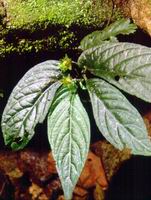 |
Stauranthera grandiflora Benth.
Penins. Malaysia, Pulau Tioman, phot. A. Weber (1984). |
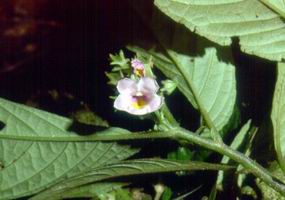
|
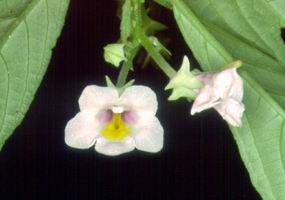 |
Stauranthera grandiflora Benth.
Penins. Malaysia, Pulau Tioman, phot. A. Weber (1984). |
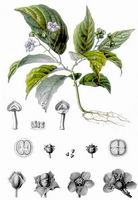 |
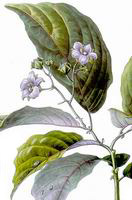 |
Stauranthera caerulea
(Blume) Merr. [as Miquelia azurea Blume]
Rumphia 4, t. 189 (1848). |
last modified: 2007-07-13